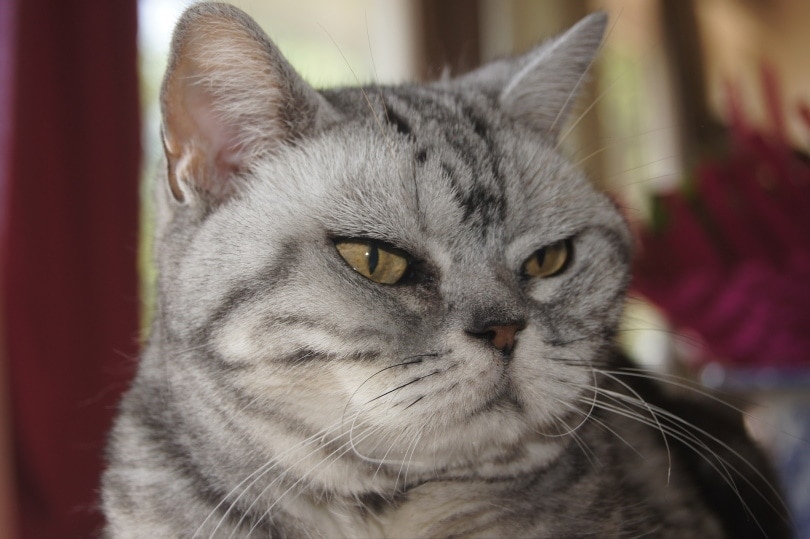American Shorthairs, like most cat breeds, are not hypoallergenic. They produce allergens that can cause reactions in sensitive individuals. However, this doesn’t mean people with allergies can’t enjoy the companionship of these lovable felines.
Shedding and Allergen Levels of American Shorthair Cats
American Shorthair cats, like all cats, shed their fur and dander, or dead skin cells. Dander can contain the allergenic protein Fel d 1, which triggers allergic reactions in certain individuals. The sebaceous and salivary glands of cats produce fel d 1, which is found in the saliva, skin, fur, and urine of cats. A cat that licks itself exposes its body to Fel d 1. Fel d 1 is released into the atmosphere by cats when they shed their fur or dander. Therefore, when a person who is allergic to cats inhales or comes into contact with Fel d 1, their immune system perceives it as an outside invader and creates antibodies to combat it. Histamine and other chemicals that cause inflammation and irritation in the nose, eyes, lungs, and skin are then released as a result of these antibodies.
Like most other shorthaired cats, American Shorthair cats shed somewhat, but not nearly as much as longhaired cats, which can be problematic for allergy sufferers. Their undercoat is thick and they have a dense coat, which they shed periodically, usually in the spring and fall. When the cat sheds, its dander and saliva-dried fur come off, which can increase airborne allergens. However, a cat’s shedding rate can vary greatly based on a number of variables, including its diet, health, and season. Fortunately, maintaining your cat’s health, nutrition, and regular grooming can help control shedding. Consequently, it may also aid in reducing the quantity of allergens in your house.
What Causes Cat Allergies?

Cat allergies are caused by the protein known as Fel d1. This protein is present in all cats’ saliva, glands, and urine. Individuals who experience these reactions are affected by dander, the flakes of dead skin that cats shed, along with the fur.
Furthermore, cats tend to lick their fur to groom themselves, which distributes this protein throughout their body. The Fel d1 is perceived by those who suffer from allergies as an invasive pathogen that causes bodily inflammation and infections.
Hypoallergenic refers to the decreased risk of allergic reactions in your pet. However, no cat’s entirely allergy-free. You can only have more minor triggers with some breeds. Even hairless cats create dander, but this can be controlled with good grooming.
Remaining in the same room as the cat can cause allergies. This is due to the possibility that cat dander or saliva could stick to surfaces and enter the human body. In addition, the allergens can also be airborne.
Fel d 1 Protein and Allergic Reactions
Cat allergies are primarily caused by a protein called Fel d 1, which is produced by the salivary and sebaceous glands of the cat. The cat’s urine, skin, fur, and saliva all contain Fel d 1. A cat that licks itself exposes its body to Fel d 1. Fel d 1 is released into the atmosphere by cats when they shed their fur or dander. An individual suffering from a cat allergy will produce antibodies to combat Fel d 1 when they inhale it or come into contact with it. Histamine and other chemicals that cause inflammation and irritation in the nose, eyes, lungs, and skin are then released as a result of these antibodies.
FAQ
Are American Shorthairs hypoallergenic?
What is the most hypoallergenic cat?
Do American Shorthair cats shed?
Are short hair cats better for allergies?